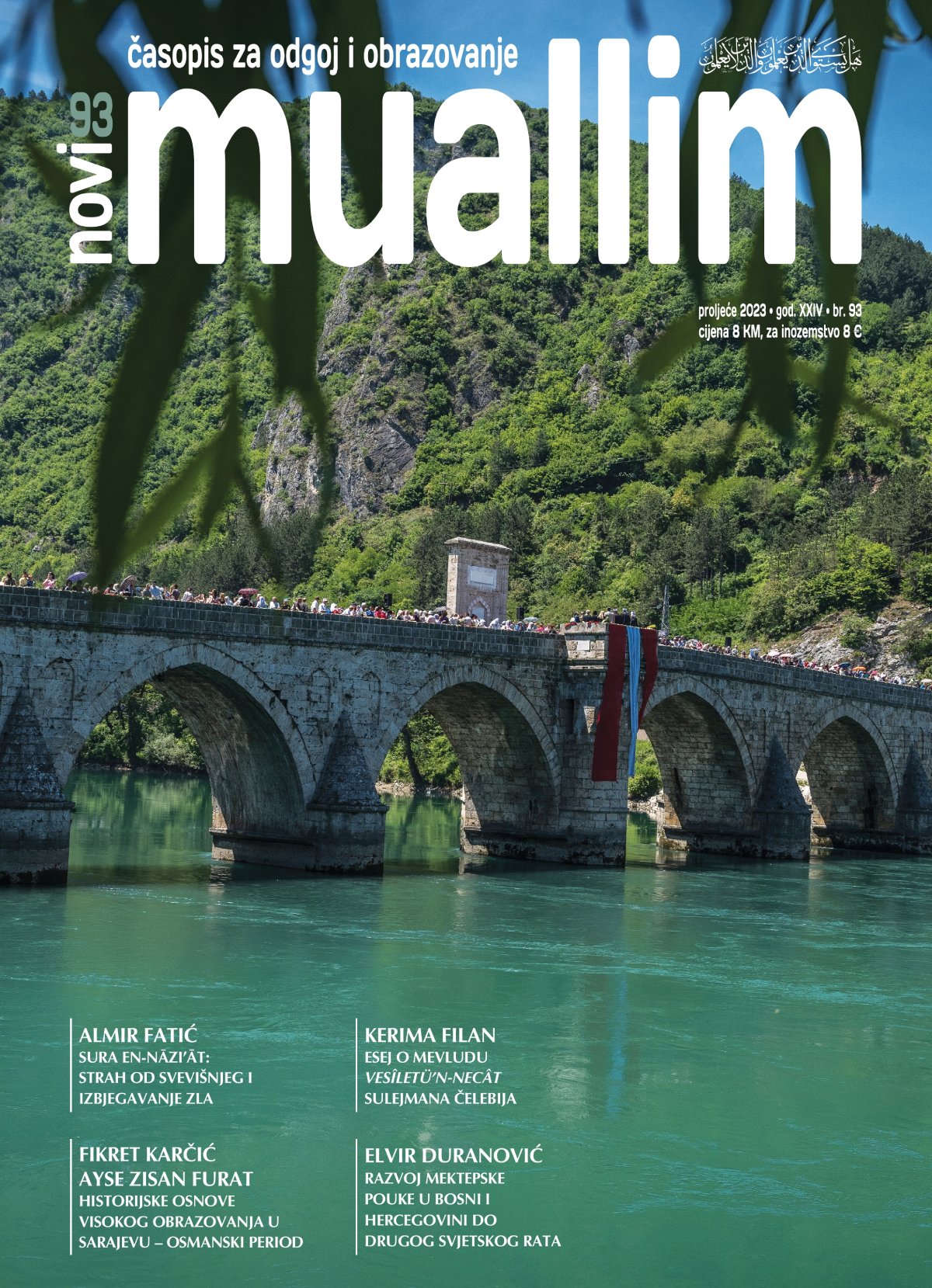DEVELOPMENT OF MACTAB CLASS IN BOSNIA AND HERZEGOVINA UNTIL THE SECOND WORLD WAR
DOI:
https://doi.org/10.26340/muallim.v24i93.2011Keywords:
makteb, maktebi-ibtidaiyyah, sibjan-makteb, makteb class, the reform of maktab class, the First Educational surveyAbstract
UDK: 28-472(497.6)“14/19“
The author here presents a study of the development of the maktab class since its establishment during the Ottoman rule in Bosnia and Herzegovina until the end of the Second World War. During the Ottoman period, the local maktab class education was no different from the maktab education anywhere else in the empire. Its primary goal was to teach children reading the Qur’an and basic religious studies. The first real reform of maktab education took place by the end of the 19th century with the foundation of maktabi-ibādiyyah – reformed maktab, first in main cities and later in most places in Bosnia and Herzegovina. The author here presents the documents on the bases of which the first maktabi- ibādiyyah were established and then he analyses all the reforms of the Teaching Plan and Program therein until these institutions were closed down in 1931. He particularly focuses here on the First Islamic educational survey which initiated the reform of the maktab class in elementary sibjan maktab and in reformed maktabi- ibadiyyah. These were the two types of maktab classes that existed until 1931 when a unitary Teaching Plan and program for maktab classes was adopted for all the maktabs in Bosnia and Herzegovina. This Teaching Plan and Program, with minor amendments, remained effective until the end of the Second World War.
Downloads
Published
How to Cite
Issue
Section
License

This work is licensed under a Creative Commons Attribution 4.0 International License.
Naknada:
a. Časopis ne naplaćuje naknadu za obradu članaka (APC) i naknadu za podnošenje članaka.
Autori koji objavljuju u ovom časopisu pristaju na sljedeće uvijete:
- Autori zadržavaju autorska prava i pružaju časopisu pravo prvog objavljivanja, pri čemu će rad jednu godinu po objavljivanju biti podložan licenci Creative Commons imenovanje koja omogućuje drugima da dijele rad uz uvijet navođenja autorstva i izvornog objavljivanja u ovom časopisu.
- Autori mogu izraditi zasebne, ugovorne aranžmane za ne-ekskluzivnu distribuciju rada objavljenog u časopisu (npr. postavljanje u institucionalni repozitorij ili objavljivanje u knjizi), uz navođenje da je rad izvorno objavljen u ovom časopisu.


